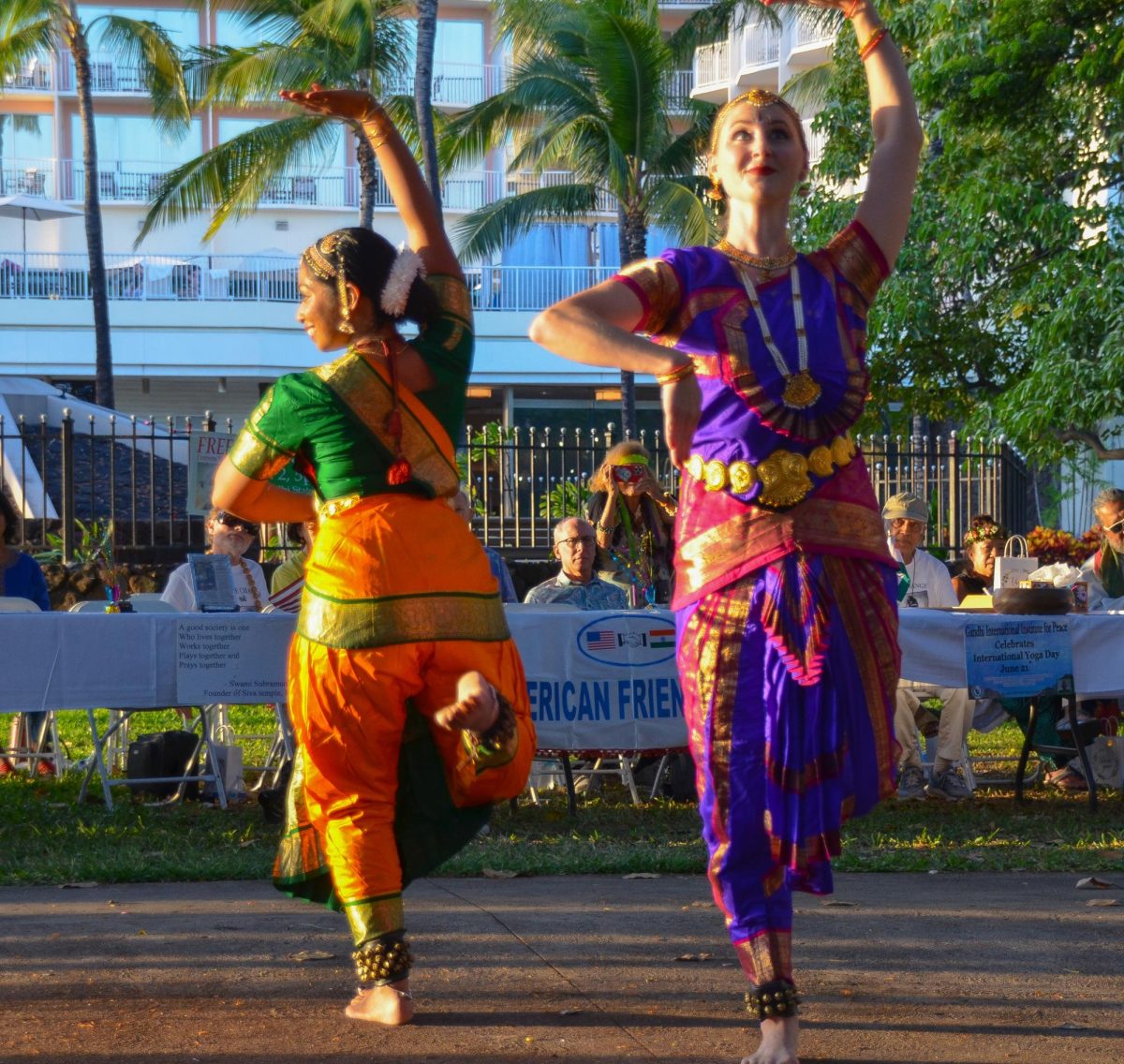A diverse crowd of over 100 people gathered at Kapiolani Park on October 2, 2024, to celebrate Mahatma Gandhi’s birthday in front of his lifesized bronze statue. Gandhi’s birthday has been celebrated at Kapiolani Park every year since 2006. King Kamehameha I, Father Damian, and the great Duke Kahanamoku are a few examples of people who have had a profound impact on Hawai’i’s culture and contributed to its unique identity. Many people believe that Gandhi also belongs on this list because of his guiding principle of peace and how it has changed the modern perpective of society.
Mohandas “Mahatma” Gandhi was born on October 2, 1869, in Porbandar, India, during British rule. India was a British colony from 1858 until its independence in 1947. After studying law in London he received a job offer from the South African law firm Dada Abdullah and Company in 1893. When he arrived in Durban, a main seaport of South Africa which was home to the law firm, he witnessed first-hand the extreme racism known as apartheid that many Africans were experiencing in their own country. This reminded him of the plight of Indians who faced very similar, often dire, circumstances back home in India due to their harsh treatment by the British Raj, or the British Kingdom of India. Gandhi would later lead a historic independence movement in India, which was instrumental in helping India achieve independence from Great Britain in 1947.
Gandhi, who is known as the Father of India, has also had a major influence on the Hawaiian community through his teachings. He promoted the principles of ahimsa, or non-violence; satyagraha, or civil disobedience and peaceful protest; and humanitarian rights. Dr. Raj Kumar of Honolulu, Hawaii, founded the non-profit organization Gandhi International Institute for Peace (GIIP) in 2001 after the September 11th terrorist attacks.
According to Dr. Kumar, there are many similar organizations across the United States. “What Mahatma Gandhi did, what Dr. Nelson Mandela did, and what Dr. Martin Luther King, Jr. did . . . showed us how you can stand up to oppressors in a peaceful manner.” The GIIP commissioned a statue of Gandhi, one of only five such statues across the United States, which was sculpted by Stephen C. Lowe in 1990 and placed under a large banyan tree in Kapiolani Park.
On the base of the statue are inscriptions of the names of many people who contributed toward the statue. This includes Dr. Ankur Jain, a 1995 graduate of Punahou. Dr. Jain explains, “Although visitors are sometimes surprised to see the statue of Gandhi near Waikiki beach, it is a perfect symbol of the Ohana spirit which makes Hawai’i so special.” The statue was vandalized in 2023 but was successfully restored in 2024. “It cost the city about $38,000 to restore the statue,” says Mr. Harendra Panalal, president of GIIP. Dr. Kumar adds “We have talked to the City and County of Honolulu about installing some cameras here to prevent such incidents in the future.”
On April 9, 2015, then-Governor David Ige declared October 2nd as “Mohandas Karamchand Gandhi Day” and the International Day of Nonviolence, making Hawaii the first state to do so. This year’s event, which remained free to the public, featured Senator Suzanne Chun Oakland as a keynote speaker, live music from the Royal Hawaiian Band, speeches by community leaders, as well as cultural dances, yoga, and meditation. Mr. Pannalal hopes that these annual events will help increase local awareness of Gandhi and GIIP. “Dr. MLK is known to everybody but . . . Gandhi was the main person who promoted peace.”
“You may never know what results come of your actions, but if you do nothing, there will be no results”
– Mohandas “Mahatma” Gandhi

